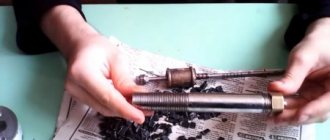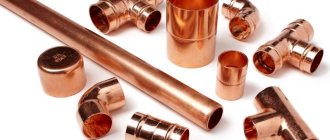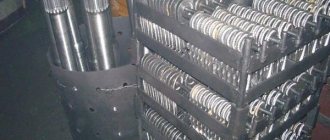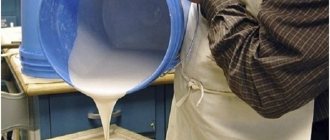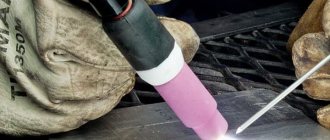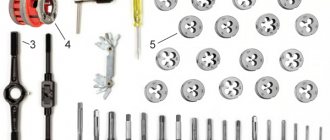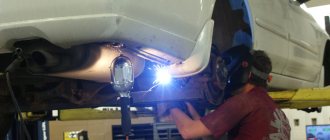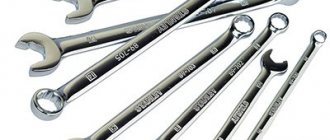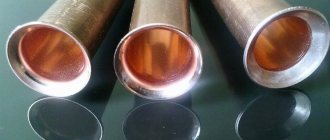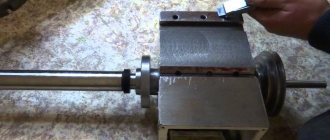Rolled copper pipes of various sizes are used to create utilities, heating and cooling equipment. When installing systems and repairing equipment, it is almost always necessary to connect pipe elements to each other or to other structural parts.
The work is carried out using soldering or special union couplings. To obtain a tight connection, copper tubes are often first flared. This operation is also called rolling.
Flaring
However, in a professional environment, the concepts have different meanings. Therefore, it is necessary to find out what these two processes are and how they differ. This will allow further work to be completed correctly.
Flaring and rolling for copper pipes
Both concepts represent technological operations performed using different equipment. Although most ordinary people refer to these two processes as carrying out the same actions.
Rolling is performed on a special machine, the design of which contains work rolls. With their help, sheet or pipe products are deformed. Therefore, rolling is a process that makes it possible to produce products with a different cross-section from round pipes.
When flaring copper pipes, a tool without rolls is used. It allows you to deform only the ends of the rolled pipe. Therefore, flaring is an operation to change the internal and external diameters of exclusively the ends of a copper tube under the influence of mechanical load.
That is, rolling is a tool. Flaring is a technological action. Here's what Wikipedia says.
As a result of the process, the ends of the rolled pipe take the shape of a cone. The ends of the tubes are also flared in the form of a mushroom or with a double funnel. The last operation is carried out in 2 steps: first, a so-called fungus is created on the end, and then it is crushed with a cone.
Most often, flaring is performed when you need to reliably connect two parts of small diameter. Expanding the end allows you to fit the pipe onto the same product, equipment pipe or fitting.
Thanks to this, soldering does not have to be done end-to-end when using shaped parts that need to be inserted into the elements to be joined. Therefore, there will be no reduction in the internal size of the node. This allows you to maintain the system throughput at the same level.
Flaring technology and stages
Rolled copper pipes are connected using soldering or couplings. The option used affects the specifics of flaring.
Before soldering, the end of the pipe is expanded until another part fits into it. The difference between the inner diameter of the tube and the cross-sectional size of the inserted element should be 0.1-0.2 mm. This gap is filled with solder during soldering. Therefore, a tight and durable connection is formed.
When using a fitting, a chamfer is created on the edge of the pipe before expansion. It should have an angle of 45⁰. The chamfer allows you to increase the contact area of 2 parts. This increases the reliability of the connection.
The tightness of the joint is also ensured by the natural plasticity of the non-ferrous metal. When the coupling is tightened, the soft copper tightly grips the fitting, eliminating any gaps.
Flaring process for copper pipes.
The process of correct and high-quality flaring of copper tubes for air conditioners, heating heat exchangers and various engineering systems is carried out in the following sequence:
- The rolled pipe is cut strictly perpendicular to its axis.
- The cut and the outer surface near the end of the tube are cleaned.
- If necessary, the round shape of the section must be restored if the part was deformed during cutting.
- A crimp nut is placed on the pipe if the connection is made using a fitting.
- The copper pipe element is fixed in the rolling tool. The edge of the part, 5-6 mm long, should remain free.
- A stamp of the required size is inserted into the holes of the tube. It is gradually screwed into the product, which leads to softening and stretching of the metal. As a result, the edge of the pipe takes the form of a cone.
- The expander with a stamp and the holder are removed from the rental.
At the end of the operation, the end of the product is inspected for the presence of burrs. When they are discovered, they must be cleared. There should also be no cracks on the flared edge.
Completion of tube flaring.
The edges of the created bell must be parallel to each other. If such defects are detected, it is necessary to cut off the extended end and repeat the entire process.
What is the rolling process
To understand what pipe rolling is, you should familiarize yourself with all the operations performed with pipe products that involve the use of this technology:
- Blanks that have a round or flat shape are turned into products called pipes.
- The diameter of the end of the tube is increased in order to make a connection between it and another part or section of the line.
- The end of the product is crimped to ensure the tightness of the joint, as well as to reduce the size of the outer diameter or for other purposes.
- They profile pipes - turn them into rectangular, oval or square pipe products.
- Products are bent to a relatively large radius.
Rolling tool for copper pipes
Rolled copper pipes are soft and elastic products. Therefore, you can expand the tube using a makeshift method. To do this, the rolled product is simply pulled onto a blank in the form of a cone of the required size. However, it is very difficult to create a bell without breaking the geometry.
Often the walls of the expanded area are obtained with different thicknesses. The created bell also often develops skew. All such defects appear due to the uneven force that a person applies when flaring using a handicraft method.
A neat bell of the correct geometric shape can be obtained using a special tool. Only it will allow you to perform high-quality rolling for copper pipes of an air conditioner or other equipment.
Expander
The tool is a hand-held device that operates using physical force. The expander design includes two levers and a cone-shaped sliding expander. Rolling is done by pressing on the handles after the tool head is inserted into the pipe.
The expander allows you to quickly complete the job with minimal labor costs. The tool kit includes a set of rolling pins selected for the internal diameter of the parts. However, they stretch the rolled walls unevenly, which makes it difficult to obtain a high-quality result. After all, thinner areas may simply burst.
Conical
This type of tool consists of two parts. One of them is a matrix. It is a device in the form of a vice with cylindrical holes, each of which in the upper part is expanded at an angle of 45°.
The second element of the device is a flaring machine, consisting of the following parts:
- housings with guides;
- cone-shaped expander;
- control mechanism;
- power screw.
When physical force is applied to the control mechanism, the power screw begins to rotate. The expander is screwed into the pipe. This leads to softening of the metal. As a result, the edge of the product takes on a conical shape in accordance with the expansion of the hole in the matrix.
Rolling for copper pipes
Thanks to the guides, the copper tube and the expander are always in the same axis. Their position does not change during the process. Therefore, you get a neat bell without distortions and with smooth edges.
Mechanical
This device has a similar design to a cone flaring machine. The difference lies in the working body. A mechanical flaring machine uses a set of rollers instead of a cone expander.
Set of rollers for copper pipes.
They uniformly roll out the rolled edge. Therefore, it is possible to perform flaring with the same thickness over the entire area of the created socket.
Electrically driven
This is the most expensive type of instrument. It features high performance. For this reason, the battery device is used by installation companies when performing a large volume of work.
Purpose and methods
Processing of rolled pipes using the rolling method, as mentioned above, can be carried out in order to change the shape of the cross-sectional profile, as well as in order to change the initial parameters of the finished pipe - outer and inner diameters, wall thickness, shape of the final part. To change the cross-sectional shape, rolling is carried out through a system of rolls of special equipment, which, by exerting significant pressure on the pipe walls, form the required profile.
Rolling equipment uses various types of rolls to form a specific shape and size of the workpiece.
If the simplest devices are effective for expanding the end part of soft tubes for air conditioners, then for rolling tubular products made of steel alloys, the use of special tools is necessary. The latter, depending on the parameters and material of the rolled pipe that needs to be rolled, are divided into the following categories:
- T – for processing pipes with an internal diameter in the range of 5.6–12.5 mm (a feature of the tool in this series is that it can be used to roll to a limited depth);
- ST – for rolling welded products, the internal diameter of which is in the range of 6–11 mm (also has a limited rolling depth);
- P – for processing rolled pipes with a diameter of 1.2–4 cm (the maximum flaring value when using such a tool is 4.87 cm);
- RT - for working with pipes with a diameter of 0.55–1.15 cm (in this case, the internal diameter of the product can increase to 1.29 cm);
- CP - for rolling to a greater depth (the maximum flaring value with tools of this series is 3.23 cm);
- 5P – for processing thin-walled pipes made of stainless steel alloys.
Photos of some flaring tool models
There are several other series of rolling tools available on the modern market, but we have listed the most popular ones.
A specialized tool for pipe flaring is most often used when installing heat exchangers in which tube sheets are installed. The working body of such a device, which exerts a mechanical effect on the walls of the pipe, is subjected to special treatment, which makes it possible to endow it with high strength.
Recommendations for the use of flaring for copper tubes
High-quality flaring allows you to create a reliable and tight connection. This can only be done if you have experience. Therefore, it is recommended to practice on sections of rolled pipes of different diameters before the main installation work.
To perform high-quality flaring, also adhere to other expert advice:
- You only need to flare a pipe whose end is free of burrs, debris and various defects, including bends. The edge of the product should have a round shape.
- The expansion tip of the tool must be positioned without distortion relative to the axis of the pipe.
- When expanding a part using a homemade method, the cone-shaped blank should not be pressed, but screwed into the hole of the rolled product.
- When using a device with a matrix, it is necessary to select a hole in the bar with a size corresponding to the diameter of the workpiece.
The outer surface of the pipe near the end should always be cleaned with an abrasive sponge, regardless of the tool used. This will remove debris and dust from the product. Therefore, it will be easier to securely fix the pipe part in the holder.
Profiling of pipe products
The full production cycle of profile pipes consists of several stages:
- Flat steel blanks are cut into narrow strips.
- They are butt welded to form a long strip and wound onto a drum.
- As needed, the strip is transferred to a rolling mill, where it is rolled into a round billet.
- Its edges are welded, usually using induction currents.
- The workpiece is passed through rollers, which give it the required shape.
It is easier and cheaper to roll finished round pipes.
Flaring tool set
When doing it at home yourself, you first need to prepare the main tool:
- pipe cutter;
- chamfering rimmer;
- one of the available flaring machines.
Tube flaring kit.
The flaring process must be carried out in stages. If you follow all the nuances and recommendations of specialists, it will be possible to create neat sockets with the correct geometry at the ends of the pipes. Therefore, the connections will be tight and reliable.
Conclusion and video on the topic
High-quality rolling at the ends of copper pipes for heating, air conditioning, and plumbing systems can only be performed using a special tool. When choosing a device, you need to consider how often it will be used.
For one-time work at home, it is better to rent a tool or from friends. An expensive device will only pay for itself when large-scale installation work is carried out. Regardless of the type of flaring machine, it must be purchased after checking its functionality.
Video review of rolling machines for copper pipes
The video will help you understand the choice of tool and flaring of the ends of copper tubes.
